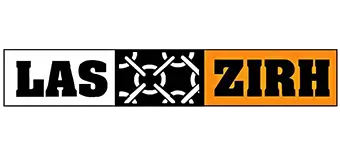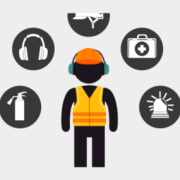Comprehensive Guide to Effective Slag Handling in Mining
Mining operations produce immense amounts of by-products, one of the most significant being slag. Effective slag handling plays a crucial role in the overall success of mining activities. This article dives into what slag is, the entire process of handling it, and the importance of specialized solutions like Las Zirh Tire Protection Chains to safeguard OTR (off-the-road) tires during operations. Understanding and improving slag handling ensures better productivity, safety, and cost-efficiency.
Mining involves various byproducts, with slag being a significant one. Proper slag handling ensures that mining operations run smoothly and reduce environmental impacts. Efficient slag handling optimizes site productivity and protects resources from damage or unnecessary wear. Understanding the process and using specialized equipment, such as Las Zirh Tire Protection Chains, is essential for safe and effective slag handling in mining operations.
What Is Slag and Why Does It Matter?
Slag Defined
Slag is a byproduct generated during the smelting and refining of metals. When ore is processed, unwanted impurities separate from the molten metal and form slag. This mixture primarily consists of oxides, silicon, and other waste materials. Slag can sometimes contain valuable elements, making proper slag handling crucial for reclaiming usable materials.
Importance of Slag Handling in Mining
Slag needs to be handled correctly to prevent potential hazards and maximize resource recovery. Efficient slag handling minimizes waste and ensures that mining facilities remain safe and operational. Poor slag handling practices can damage equipment, environmental contamination, and costly downtime.
The Process of Slag Handling
Slag Collection and Removal
Slag collection starts with its separation from molten metal. Operators use slag skimmers and specialized tools to lift slag out of furnaces or smelters. Proper collection techniques prevent contamination of valuable metals and improve the purity of the end product.
The removed slag must be moved to a designated area for cooling and processing. Slag handling equipment, such as conveyors and heavy-duty vehicles, is essential for transporting slag efficiently.

Cooling and Solidification
Once collected, the slag must cool before further handling. Natural air-cooling and water-cooling methods are popular, with water cooling speeding up the process. Once cooled, the slag hardens and becomes more manageable. This phase is essential for safe slag handling since handling molten slag poses risks to workers and equipment.
Crushing and Size Reduction
Crushed slag is easier to transport and recycle. Slag crushers reduce large chunks into smaller pieces, which can then be transported or repurposed. This step facilitates slag handling and prepares the byproduct for secondary uses, such as construction material or road filler.
Final Disposal or Repurposing
Depending on the type of slag and its composition, mining facilities may repurpose it or dispose of it safely. Iron and steel slags often find applications in construction and road paving, making slag handling part of sustainable resource management.
Key Challenges in Slag Handling
Equipment Damage and Wear
Mining equipment used for slag handling must withstand extreme conditions. The abrasive nature of slag can damage vehicles, leading to higher maintenance costs. Equipment exposed to high temperatures or heavy slag loads can wear out quickly without protective measures.
Environmental Concerns
Improper slag handling can lead to environmental damage. Slag that leaches harmful substances can contaminate soil and water sources. Effective slag-handling practices must include environmental safeguards and adherence to regulations.
Worker Safety
Handling slag requires strict safety protocols. Hot and sharp slag poses a risk of burns and injuries. Workers must be trained in best practices and use protective gear to minimize risks.
Las Zirh Tire Protection Chains in Slag Handling Operations
A vital component of slag handling involves protecting the equipment used in slag transport. Heavy-duty vehicles, such as loaders and dump trucks, move cooled slag to storage or processing areas. This work puts immense stress on OTR tires, which face premature wear and damage due to the rough, abrasive nature of slag.
What Are Las Zirh Tire Protection Chains?
Las Zirh Tire Protection Chains are specialized chains designed to wrap around OTR tires, offering them unparalleled protection. These chains extend the life of the tires, improve grip, and help manage the intense conditions present in mining and slag handling environments.
Benefits of Las Zirh Tire Protection Chains
Increased Tire Lifespan: By shielding tires from direct contact with sharp slag pieces, the chains help reduce cuts and wear.
Enhanced Safety: The added grip these chains provide ensures better maneuverability and safety in challenging terrains.
Cost Efficiency: Protecting tires from damage reduces the need for frequent replacements, leading to significant cost savings.
Adaptability: Las Zirh Tire Protection Chains can be customized to fit different tire sizes and types, making them suitable for a wide range of mining equipment.
Application in Slag Handling
In slag handling, vehicles often traverse uneven surfaces littered with cooled slag, which can puncture or damage tires. Using Las Zirh Tire Protection Chains reduces these risks, enabling mining companies to maintain operations without interruptions due to tire failure.

Steps to Implement Las Zirh Tire Protection Chains
- Assessment of Equipment Needs: Mining operations should evaluate which vehicles need extra tire protection. Usually, loaders, haul trucks, and bulldozers used in slag transport benefit the most.
- Choosing the Right Chain Type: Las Zirh offers different models tailored to varying needs. Mining sites should select chains that match the tire size and anticipated workload.
- Installation and Maintenance: Proper installation is crucial for chain efficiency. Regular maintenance ensures the chains remain in optimal condition and continue to protect tires effectively.
- Training Personnel: Workers should be trained on how to inspect and maintain the chains, ensuring they can spot potential issues before they escalate.










